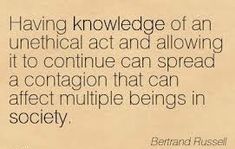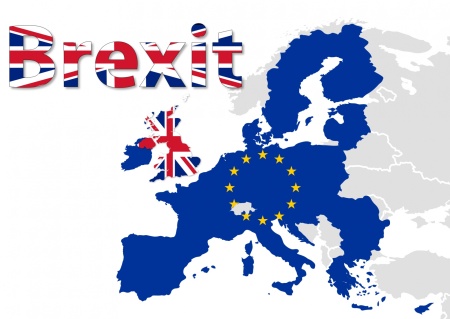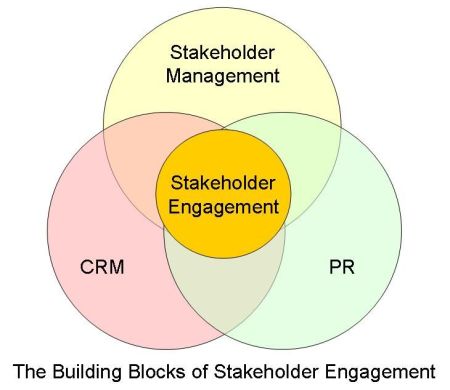 A couple of weeks ago I posted Practical Ethics discussing the undue reliance governments and others place on other people’s ethics, Through naivety, undue optimism, or laziness, they set up situations based on blind trust in the ethical standards of others which have resulted in deaths, injury and the loss of $billions.
A couple of weeks ago I posted Practical Ethics discussing the undue reliance governments and others place on other people’s ethics, Through naivety, undue optimism, or laziness, they set up situations based on blind trust in the ethical standards of others which have resulted in deaths, injury and the loss of $billions.
In this post I want to look inside an organisation and discuss reason why Determining the ethics of the organisation is at #2 in my Six Functions of Governance and Creating the culture of the organisation is at #3. #1 in the list is Determining the objectives of the organisation.
The underlying approach I’ve taken, founded in stakeholder theory, is the presumption that the best way to achieve an organisation’s objectives is to work with the organisation’s full spectrum of stakeholders so they contribute to the success of the organisation and everyone benefits. This requires a strong ethical foundation and an outwardly focused culture. The role of the governing body is to set the objectives and create the organisation’s culture and ethics, the role of management is to work within this framework to achieve the objectives. Whilst many aspects of governance can be delegated to a degree, setting the ethical standards of the organisation in particular is non-transferable. It starts and stops at the top – with the governing body.
The ethical standards of an organisation are created in two ways:
- The way the organisation’s leaders act;
- The ethical standards the leaders are prepared to tolerate in their subordinates.
This post will look at both of these aspects, using the example of the current scandal surrounding Comminsure (the insurance arm of the CBA bank) to highlight their importance – see more on the scandal.
Leaders set the standard.
Generally speaking, the top managers in an organisation create a ceiling on ethical behaviours. Leaders at the next level down tend to be rated lower than their managers on every leadership dimension including their honesty and integrity, many may rate equally but it is very rare to find a subordinate acting more ethically than the organisation’s leaders (for more on this see Ethical Leadership).
The key here is the word ‘act’ – leaders set the ethical standards of the organisation by their actions, not their statements. It more than ‘walking-the-talk’, talking is almost irrelevant.
One glaring examples from the Comminsure scandal will serve to demonstrate the issue. The CBA’s CEO said that he placed a high value on transparency and open communication; this included both encouraging and protecting ‘whistleblowers’ within the bank. A commendable and highly ethical position; and from a practical perspective essential for the minimisation of wrong doing in a workforce of 55,000.
However, actions speak louder than words! In November 2014 the chief medical officer of Comminsure, Dr Benjamin Koh, disclosed his concerns over “an improper state of affairs” concerning aspects of Comminsure’s business to key independent directors at Comminsure including the chairman Geoff Austin. Two months later Comminsure began to investigate Dr Koh and he was sacked by the managing director of Comminsure, Helen Troup, for ‘misconduct’, in August 2015. He is now suing Comminsure and the CBA for unfair dismissal.
The appearance is that the bank’s management won’t fire you for whistle blowing but they will find some other excuse. The bank virtually admits as much, in this statement which states: “Commonwealth Bank encourages all employees to speak up if they see activities or behaviours that are fraudulent, illegal or inconsistent with our values. We provide a number of different safeguards to ensure that there are no negative consequences for raising concerns. We have thanked Dr Koh for raising concerns that led to the CMLA Board conducting a review. Dr Koh’s employment was not terminated for raising concerns. It was terminated primarily for serious and repeated breaches of customers’ privacy and trust involving highly sensitive personal, medical and financial information over a lengthy period of time.” What they fail to mention was one of major issues raised by Dr. Koh was the manipulation, alteration and loss of information from the records he is accused of mishandling.
The perception may be incorrect, but to anyone looking on from outside of the organisation it would seem the person running Comminsure preferred to sack a whistleblower rather than deal with the problems he raised.
The CEO and the Directors of CBA can talk until they are blue in the face about the ‘ethical standards’ they purport to uphold, their actions speak louder. The person running Comminsure and responsible for the issues raised by Dr. Koh is still in her role, the ‘whistleblower’ is out of a job. If the board really meant what is says, the whistleblower would have been protected and the manager attacking him disciplined. Everyone else in CBA will clearly understand the message.
It really does not matter what the final outcome of all of this is; the actions of CBA and Comminsure management have made it clear to every one of their 55,000 staff that if you raise concerns within the banks ‘whistleblower’ processes you will be fired!
Given this perception, is it any wonder that the leaders of the CBA seem to be continually in the dark about what’s really going on in their organisation…….. Unfortunately for those in governance role not knowing is not an excuse.
Tolerating unethical behaviour.
 The second plank underpinning an ethical organisation is the degree of unethical behaviour it is prepared to tolerate. If an organisation is prepared to tolerate a person increasing his or her bonus by not paying out an insurance claim to a dying person for 3 or 4 years, everyone else in the organisation will understand the acceptable level of behaviour.
The second plank underpinning an ethical organisation is the degree of unethical behaviour it is prepared to tolerate. If an organisation is prepared to tolerate a person increasing his or her bonus by not paying out an insurance claim to a dying person for 3 or 4 years, everyone else in the organisation will understand the acceptable level of behaviour.
Comminsure has been shown to have withheld legitimate payments to claimants for years to boost profits and bonuses (only rectified after the national broadcast was imminent). As far as I can tell everyone responsible from the managing director down are still in their jobs.
Previously the CBA was shown, courtesy of a Senate enquiry, to have misrepresented information to clients and falsified documents. Again, most of the people responsible still work for the CBA and the ethical benchmark has been determined by this fact.
If the behaviours were ethically unacceptable people would be fired or moved into roles where they cannot adversely affect customer’s lives. The fact most people are still in their roles and still have their bonus payments from previous years indicates to everyone the CBA believes these behaviours are ethically acceptable and will continue to reward people for placing profits ahead of customers (see The normalisation of deviant behaviours). Management’s actions speak far louder then PR announcements and so called ‘public apologies’ that only eventuate after adverse national publicity.
Culture
Culture is ‘the way we do thing around here’ – one of the key elements of culture is the ethical standards people see as ‘normal’; another is the learned experience of how to behave within the organisation. As outlined above these settings are very different from the rhetoric.
But, ethics and culture are always shades of grey; the CBA’s culture is clearly flawed if the bank claims to be concerned about its customers. However, if the CBA is really only concerned with short-term profits, the culture, ethics and PR spin may be appropriate. In the last 6 months, the CBA achieved a remarkable return on equity of above 17 per cent, and a $4.8 billion half-year profit. And, despite the scandal, its shares have increased in price today. The cost is the damaged lives of some of its customers; the unresolved question is what are the acceptable limits? Maybe a Royal Commission will let everyone know.
Legal implications aside, the challenge facing the CBA is that changing culture and ethical standards is a massively difficult task and the people who created and thrive in the current culture are unlikely to be willing participants in changing it. There’s no easy answer to this dilemma.
Conclusion
The real measure of an organisation’s ethical standards are set by the way people behave when no one is looking on – there will always be mistakes and unethical actions by a few, others within the organisation will correct these deviations and being behaviours back inside the culturally acceptable norms of behaviour of the organisation. This has undoubtedly been occurring within CBA and Comminsure on a daily basis, unacceptable behaviours will have been corrected or sanctioned; desired behaviours rewarded. What’s acceptable and unacceptable is determined by the culture of the organisation and its ethical standards.
The ethical standards of an organisation are set by the actions of its leaders. What they do themselves sets the ceiling and what they tolerate in others the floor. The rest of the people in an organisation will generally find a position between these two limits and the culture of the organisation will adapt to see this level of ethical behaviour as acceptable. The problem the governors and leaders of the CBA face is the simple fact that changing the ethics and culture of an established organisation is extremely difficult.




 Posted by stakeholdermanagement
Posted by stakeholdermanagement 












